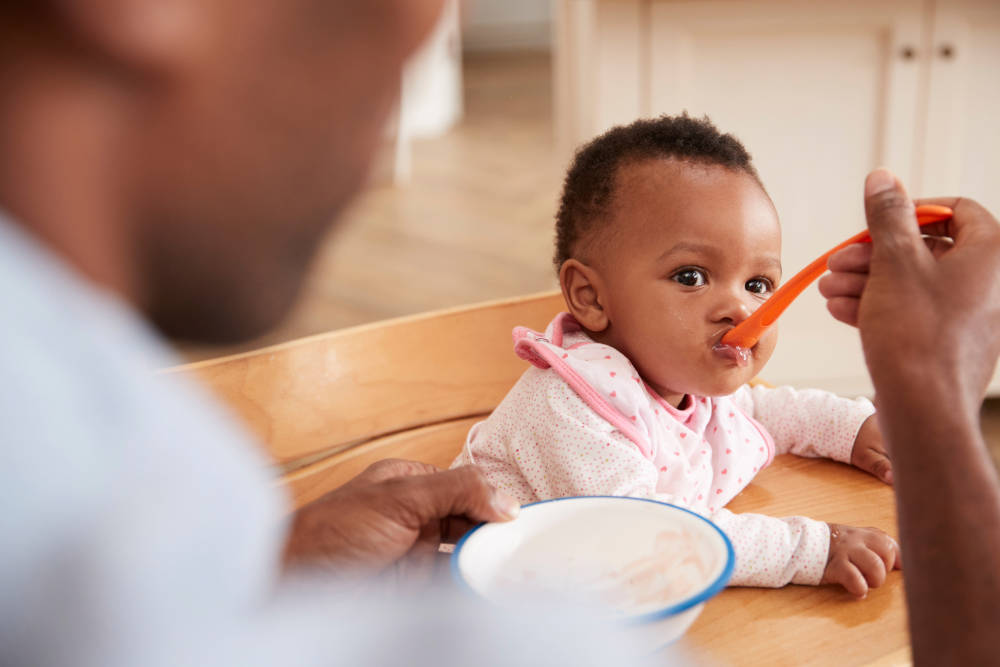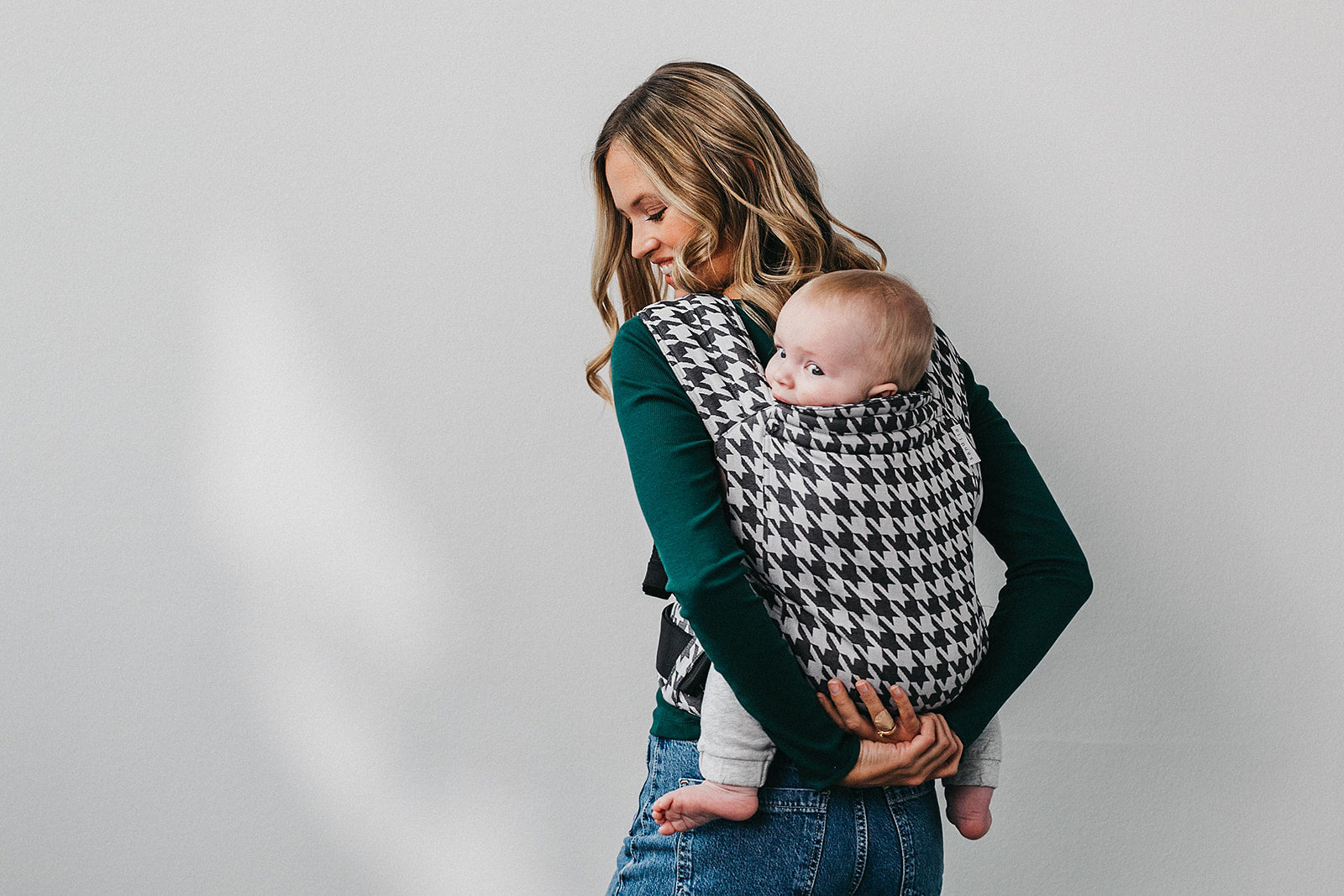
Babywearing – How long is it sensible and possible?
Introduction: Closeness, security and bonding – through carrying
Babywearing is one of the oldest and most natural forms of parent-child bonding. Whether in a baby carrier or a sling, being carried provides security, closeness, and control for your baby. But sooner or later, many parents ask themselves: How long can I carry my baby? When is it too much? And is there even an upper limit?
In this article, you'll find answers to all these questions. We explain how the need for babywearing changes over the course of development, what signals your baby is sending—and why babywearing can be beneficial even beyond the first year.
1. Why babywearing is so important
Carrying is a basic human need
Babies are born " physiologically premature "—meaning they are particularly dependent on physical closeness and protection after birth. Being carried corresponds to their natural expectation and supports numerous developmental processes:
-
Physical development: The upright position in the sling promotes hip development (e.g. prevention of hip dysplasia).
-
Sensory stimuli: sense of balance, perception and muscles are stimulated.
-
Emotional security: Proximity regulates stress, heart rate and breathing.
-
Bonding: Carrying promotes the parent-child relationship.
2. How long should you carry a baby per day?
There's no universal answer here—it depends on several factors: the baby's age, temperament, the parents' needs, and external circumstances. Some babies love being carried for hours, others prefer shorter periods.
Basically:
As long as it's good for both of you.
Some orientations:
-
In the first few weeks (0–3 months): Many babies want to be carried a lot. 4–6 hours a day is not uncommon.
-
From 3 months: Carrying times often settle at 2-4 hours per day, sometimes in several stages.
-
From 6 months: Movement becomes more exciting – many babies only want to be carried in phases.
-
Toddler age (from 1 year): Carrying becomes less frequent, but remains a valuable option – especially when tired, sick or on the go.
3. Is there such a thing as too much to wear?
Many parents worry that they'll "spoil" their baby if they carry them a lot. This fear is unfounded. In the first few months of life, there's no such thing as too much closeness . In fact, carrying your baby gives it exactly what it needs to develop safely.
However, it is important to pay attention to signals from both sides:
-
If your baby shows restlessness, defensive behavior or whines in the carrier , this could be a sign that he or she needs a break.
-
Parents can and should listen to their own physical limits. Backs, shoulders, and pelvic floor don't need to be permanently strained.
Breaks are important – but closeness is not a mistake.
4. Carrying and development: How does the need for carrying change?
0–3 months: The fourth trimester
During this time, many babies are in almost constant physical contact. The carrier is often experienced as an extension of the womb – movement, warmth, heartbeat: everything reminds them of their familiar surroundings. Carrying phases can last several hours at a time , especially if your baby otherwise has difficulty settling down.
3–6 months: Active phase begins
The baby begins to grasp things purposefully, lift its head, and show interest in its surroundings. It loves being carried to explore the world from a safe environment—but is often happier when it is occasionally put down.
6–12 months: Exploring and crawling
Now movement becomes exciting! Many babies no longer want to be carried for long periods of time, preferring to crawl, roll, or creep through the world. Nevertheless, carrying remains important – for transitions, closeness, helping the baby fall asleep, or when the child is overwhelmed.
1–2 years: Toddlerhood
Walking, running, and "doing it yourself" are the main focus – but tired legs, new experiences, or excessive demands mean that your child still needs to be carried. A baby carrier is a lifesaver, especially during outings or when you're ill.
5. How long can you physically carry a baby or toddler?
Many baby carriers and slings can support up to 20 kg , which corresponds to approximately 3-4 years of age. This means that, from a purely physical perspective, you can still carry your child easily even at toddler age – with the right aids.
Carriers for older children (toddler carriers) have:
-
Wider bridges and higher backs
-
Padded straps for better comfort
-
Back carrying options for longer distances
It's important that the carrying comfort is right for you, too. The heavier your child, the more important an ergonomic carrying system and a back-friendly posture are – for example, back carriers or hip seat versions.
6. Signs: When does my baby no longer want to be carried?
Some signs indicate that your baby does not want to be carried (right now):
-
It stretches through or overstretches the back
-
It wriggles or cries in the carrier
-
It looks away, wants to go to the floor or shows restlessness
These signals don't mean that your child rejects being carried altogether—it just means that something else is more exciting right now. Perhaps they're tired, overstimulated, or want more freedom of movement. Observe your child lovingly and give them what they need—carrying remains an option, not a requirement.
7. What about summer, heat & carrying?
In summer, many parents worry: Isn't babywearing too warm? The answer is: It's possible – with a few adjustments:
-
Use lightweight slings (e.g. made of muslin, linen or bamboo)
-
Dress your baby less in summer (diaper + bodysuit is often enough)
-
Make sure you have good ventilation – keep your face free!
-
Wear in the shade if possible and avoid midday heat
Babies have difficulty regulating their body temperature at first, so you should check more often to see if your child is sweating or feeling cold.
8. Babywearing and pelvic floor – a topic for moms
Especially after giving birth, many mothers ask themselves the question: Can I carry my baby again – and how will this affect my pelvic floor?
Important points:
-
In the first few weeks after birth, you should only carry your baby for short periods and feel comfortable doing so – ideally in consultation with your midwife.
-
Above all, wear it high and close to your body to avoid pressure on your pelvic floor.
-
Depending on the course of the birth and the progress of your recovery, you can gradually increase the carrying time.
If you have problems with your pelvic floor, you should pay particular attention to your posture and, if necessary, choose a back carrier that is gentle on your back.
9. Carrying as a sleep aid – how long is it useful?
Many babies prefer to fall asleep while being carried—due to the movement and closeness. Some parents wonder whether this will become a permanent habit.
Here's the all-clear: Babies can fall asleep through closeness. Sleep aids are normal – and will develop over time. For example, if your baby only falls asleep when being carried, that doesn't mean it will always stay that way. Many children develop different bedtime routines as they grow older – and carrying gradually decreases.
10. Conclusion: Wear as long as you both enjoy it
The most important insight: There's no set limit to how long you can or should carry your child. Every baby, every family, and every situation is unique. Some babies want to be carried for a very long time and frequently, others only at certain times.
Carrying isn't a step backwards, but rather an expression of bonding, trust, and a focus on one's needs. Even if your child can already walk, they can still be carried. Because carrying means more than just transportation—it's closeness, comfort, and connection.
Final tips:
-
Trust your gut: you know your baby best.
-
Listen to your body: If you need breaks, they are important.
-
Try different carrying methods: from a sling to a baby carrier – depending on your age and comfort level.
-
If you are unsure, seek advice from a babywearing consultant: Often, a few adjustments are enough to improve comfort and posture.
-
Don't compare yourself to others: There's no "right" or "wrong" way to wear it—just what works for you.


